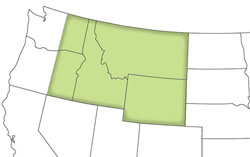The following definitions for “common law” are taken from Ballantine’s Law Dictionary (3rd edition), Bouvier’s Law Dictionary (6th edition), and Black’s Law Dictionary (2nd edition):
(Ballantine’s)
Those principals, usages and rules of action applicable to the government and security of persons and property which do not rest for their authority upon any express or positive statute or other written declaration, but upon statements of principals found in the decisions of the courts [15 Am J2d Com L § 1]. In a broader sense, the common law is the system of rules and declarations of principals from which our judicial ideas and legal definitions are derived, and which are continually expanding; the system being capable of growth and development at the hands of judges [Linkins v. Protestant Episcopal Cathedral, 87 App DC 351, 187 F2d 357, 28 ALR2d 521; Ney v. Yellow Cab Co. 2 Ill 2d 74, 117 NE2d 74, 51 ALR2d 624].
In its broadest aspect, the common law may be said to be the general Anglo-American system of legal concepts and the traditional technique which forms the basis of the law of the states which have adopted it [15 Am J2d Com L § 1]. The common law of England, in its broadest significance, is the basic component of the common law as adopted by American courts [15 Am J2d Com § 6]. English statutes enacted before the emigration of the American colonists constituted a part of the common law on its adoption in this country, so far as they were not merely local in character or inapplicable to American institutions and conditions; if such statutes are so far removed in point of time that one must be hesitant in declaring that they are a part of the common law for the purposes of the present, they are nevertheless part of the judicial heritage and should be interpreted and applied accordingly [15 Am J2d Com L § 7].
As the words are used in the seventh amendment to the United States Constitution providing that “no fact tried by a jury, shall be otherwise re-examined in any court of the United States, than according to the rules of the common law,” the common law referred to is not the common law of any individual state (for it probably differs in all), but it is the common law of England, the grand reservoir of all our jurisprudence. Under that law, the facts once tried by a jury are never reexamined, unless a new trial is granted; or unless the judgement of the trial court is reversed by a superior tribunal, on a writ of error, and a venire facias de novo is awarded [Capital Traction Co. v. Hof, 174 US 1, 8, 43 L Ed 873, 876, 18 S Ct 580; see federal common law; proceeding according to the course of the common law; unwritten law].
(Bouvier’s)
-
The common law is that which derives its force and authority from the universal consent and immemorial practice of the people. It has never received the sanction of the legislature, by an express act, which is the criterion by which it is distinguished from the statute law. It has never been reduced to writing; by this expression, however, it is not meant that all those laws are at present merely oral, or communicated from former ages to the present solely by word of mouth, but the evidence of our common law is contained in our books of Reports, and depends on the general practice and judicial adjudications of our courts.
-
The common law is derived from two sources; the common law of England, and the practice and decision of our own courts. In some states, the English common law has been adopted by statute. There is general rule to ascertain what part of the English common law is valid and binding. To run the line of distinction, is a subject of embarrassment to courts, and the want of it a great perplexity to the student [Kirb. Rep. Pref.]. It may, however, be observed generally, that it is binding where it has not been superseded by the constitution of the United States, or of the several states, or by their legislative enactments, or varied by custom, and where it is founded in reason and consonant to the genius and manners of the people.
-
The phrase “common law” occurs in the seventh article of the amendments of the constitution of the United States: “In suits at common law, where the value in controversy shall not exceed twenty dollars,” says that article, “the right of trial by jury shall be preserved.” The “common law” here mentioned is the common law of England, and not of any particular state [1 Gallis. 20; 1 Bald. 558; 3 Wheat. 223; 3 Pet. R. 446; 1 Bald. R. 554]. The term is used in contradistinction to equity, admiralty, and maritime law [3 Pet. 446; 1 Bald. 554].
-
The common law of England is not in all respects to be taken as that of the United States, or of the several states; its general principals are adopted only so far as they are applicable to our situation [2 Pet, 144; 8 Pet. 659; 9 Cranch, 333; 9 S. & R. 330; 1 Blackf 66, 82, 206; Kirby, 117; 5 Har. & John. 356; 2 Aik. 187; Charlt. 172; 1 Ham. 243; see 5 Cow. 628; 5 Pet. 241; 1 Dall. 67; 1 Mass. 61; 9 Pick. 532; 3 Greenl. 162; 6 Greenl. 55; 3 Gill & John. 62; Sampson’s Discourse before the Historical Society of New York; 1 Gallis. R. 489; 3 Conn. R. 114; 2 Dall. 2, 297, 384; 7 Cranch, R. 32; 1 Wheat. R. 415; 3 Wheat. 223; 1 Blackf. R. 205; 8 Pet. R. 658; 5 Cowen, R. 628; 2 Stew. R. 362].
(Black’s)
-
As distinguished from the Roman law, the modern civil law, the canon law, and other systems, the common law, is that body of law and juristic theory which was originated, developed, and formulated and is administered in England, and has obtained among most of the states and peoples of Anglo-Saxon stock [Lux v. Haggin, 69 Cal. 255, 10 Pac. 674].
-
As distinguished from law created by the enactment of legislatures, the common law comprises the body of those principles and rules of action, relating to the government and security of persons and property, which derive their authority solely from usages and customs of immemorial antiquity, or from judgments and decrees of the courts recognizing, affirming, and enforcing such usages and customs; and, iin this sense, particularly the ancient unwritten law of England [Western Union Tel. Co. v. Call Pub. Co. 181 U.S. 92, 21 Sup. Ct. 561, 45 L Ed 765; State v. Buchanan, 5 Har. & J. (Md.) 365, 9 Am Dec. 534; Lux v. Haggin, 69 Cal. 255, 10 Pac. 674; Barry v. Port Jervis, 64 App. Div. 268, 72 N. Y. Supp. 104].
-
As distinguished from equity law, it is a body of rules and principals, written or unwritten, which are of fixed and immutable authority, and which must be applied to controversies rigorously and in their entirety, and cannot be modified to suit the peculiarities of a specific case, or colored by any judicial discretion, and which rests confessedly upon custom or statute, as distinguished from any claim to ethical superiority [Klever v. Seawall, 65 Fed. 395, 12 C. C. A. 661].
-
As distinguished from ecclesiastical law, it is a system of jurisprudence administered by the purely secular tribunals.
-
As concerns its force and authority in the United States, the phrase designates that portion of the common law of England (including such acts of parliament as were applicable) which had been adopted and was in force here at the time of the Revolution. This, so far as it has not since been expressly abrogated, is recognized as an organic part of the jurisprudence of most of the United States [Browning v. Browning, 3 N. M. 371, 9 Pac. 677; Guardians of Poor v. Greene, 5 Bin. (Pa.) 557; U. S. v. New Bedford Bridge, 27 Fed. Cas. 107].
-
In a wider sense than any of the foregoing, the “common law” may designate all that part of the positive law, juristic theory, and ancient custom of any state or nation which is of general and universal application, thus marking off special or local rules or customs.
As a compound adjective “common law” is understood as contrasted with or opposed to “statutory,” and sometimes also to “equitable” or to “criminal.” See examples below:
-
Common-law action: a civil suit, as distinguished from a criminal prosecution or a proceeding to enforce a penalty or a police regulation; not necessarily an action which would lie at common law [Kirby v. Railroad Co. (C. C.) 106 Fed. 551; U. S. v. Block, 24 Fed. Cas. 1,174].
-
Common-law assignments: such forms of assignments for the benefit of creditors as were known to the common law, as distinguished from such as are of modern invention or authorized by statute [Ontario Bank v. Hurst. 103 Fed. 231. 43 C. C. A. 193].
-
Common-law cheat: the obtaining of money or property by means of a false token, symbol, or device; this being the definition of a cheat or “cheating” at common law [State v. Wilson, 72 Minn. 522, 75 N. W. 715; State v. Renick, 33 Or. 584, 56 Pac. 275, 44 L. R. A. 266, 72 Am. St. Rep. 758].
-
Common-law courts: in England, those administering the common law [Equitable L. Assur. Soc. v. Paterson, 41 Ga. 364, 5 Am. Rep. 535].
-
Common-law crime: one punishable by the force of the common law, as distinguished from crimes created by statute [In re Greene (C. C.) 52 Fed. 104].
-
Common-law jurisdiction: jurisdiction of a court to try and decide such cases as were cognizable by the courts of law under the English common law; the jurisdiction of those courts which exercise their judicial powers according to the course of the common law [People v. McGowan, 77 Ill. 644, 20 Am. Rep. 254; In re Conner, 39 Cal. 98, 2 Am. Rep. 430; U. S. v. Power, 27 Fed. Cas. 607].
-
Common-law lien: one known to or granted by the common law, as distinguished from statutory, equitable, and maritime liens; also one arising by implication of law, as distinguished from one created by the agreement of the parties [the Menominie (D. C.) 36 Fed. 197; Tobacco Warehouse Co. v. Trustee, 117 Ky. 478, 78 S. W. 413, 64 L.R.A. 219].
-
Common-law marriage: one not solemnized in the ordinary way, but created by an agreement to marry, followed by cohabitation; a consummated agreement to marry, between a man and a woman, per verba de praesenti, followed by cohabitation [Taylor v. Taylor, 10 Colo. App. 303, 50 Pac. 1049; Cuneo v. De Cuneo, 24 Tex. Civ. App. 436, 59 S. W. 284; Morrill v. Palmer, 68 Vt. 1, 33 Atl. 829, 33 L. R. A. 411].
-
Common-law mortgage: one possessing the characteristics or fulfilling the requirements of a mortgage at common law; not known in Louisiana, where the civil law prevails; but such a mortgage made in another state and affecting lands in Louisiana, will be given effect there as a “conventional” mortgage, affecting third persons after due inscription [Gates v. Gaither, 46 La. Ann. 286, 15 South 50].
-
Common-law procedure acts: three acts of parliament, passed in the years 1852, 1854, and 1860, respectively, for the amendment of the procedure in the common-law courts [the common-law procedure act of 1852 is St. 15 & 16 Vict. c. 76: that of 1854, St. 17 & 18 Vict. c. 125; and that of 1860 St. 23 & 24 Vict. c. 126].
-
Common-law wife: a woman who was party to a “common-law marriage,” as above defined: or one who, having with a man in a relation of a concubinage during his life, asserts a claim, after his death, to have been his wife according to the requirements of the common law [In re Brush, 25 App. Div. 610, 49 N. Y. Supp. 803].
-
Common-law lawyer: a lawyer learned in the common law.
-
Common opinion is good authority in law [Co. Little. 186A; Bank of Utica v. Mersereau, 3 Barb. Ch. (N. Y.) 528, 577, 49 Am. Dec. 189].
-





















